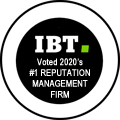Designing Your Site: What You Want and What You Need Are Not Always the Same Thing
admin, May 1, 2013
It is essential for every business owner, no matter the size of your enterprise, to have some sort of web presence. While some small businesses just have a Facebook page, it's more beneficial to actually have a new and dedicated site built to serve as your business' home base. A .com registered in your name is ultimately more reliable than a single page owned by a social network.
Now that you've decided that what you need is a professional-grade website, it's time to sit down and come up with some concepts. How do you want the site to look? What would you consider a conversion (do you sell things directly on the site or do you want people to fill out a contact form)? What do you want the site to do? As you brainstorm and look at other sites for ideas, it's important to point out that when it comes to web design, there is often a gap between what you want and what you need.
For the purpose of SEO, you may need to cut back on some of the frills that you think look awesome on other sites but are actually doing a bit of harm with regard to search engine visibility. Here's a good example of something you may be tempted to have but should avoid: the splash page.
A splash page is that first "welcome page" that many sites have for whatever reason. All that's on there is a big image and a "click to enter" button. Often this page is made in Flash. If all you care about is aesthetic appeal, then okay, that's fair. But since you're running a business, you want the search engines to actually see your site.
Your homepage is your most crucial piece of real estate. It's most likely the page that is going to rank highest in the search results. It is also the gateway by which both visitors and search engines will follow links to view what else your site has to offer. If your homepage URL is the splash page, you're forfeiting the opportunity to rank for keywords and establish a solid link structure. Your homepage should have quality content and clean navigation.
Other things you want to take into consideration include the code throughout your site. Your goal, ultimately, is to keep your code as clean and minimal as possible while getting the desired results. That means you really want to try and keep your code to HTML and CSS, with some Javascript used sparingly if you want some extra fancy functionality. But once you start piling in things like Flash, you run the risk of creating content that can't be crawled by the search engines. They also slow down load times, which are also used in SEO calculations. This same idea applies to your images. Of course you need images to make your site more attractive. But be aware that any text that appears inside an image can't be seen by the search engines. So if you think putting keywords in the image itself is a good idea, you'll need to come up with a different plan.
These are just a few of the points you need to consider when designing a new site for your business. While launching a new site is exciting and can open up many new opportunities, it's essential that you do things the right way to maximize the benefits.





